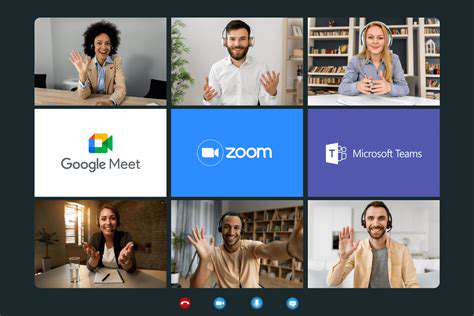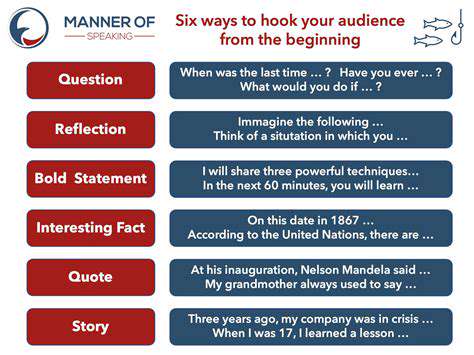Best Tools for Online Collaboration in Study Groups
Project Management Platforms: Trello and Asana
Trello: Visualizing Workflow
Trello, a popular project management platform, excels at visualizing workflows through its Kanban-style boards. This visual representation allows teams to easily track progress, identify bottlenecks, and collaborate on tasks in a highly intuitive manner. The drag-and-drop functionality makes it simple to move tasks between different stages, from To Do to In Progress and finally to Done. This streamlined approach encourages transparency and fosters a sense of shared responsibility among team members.
Trello's strength lies in its flexibility. Users can customize boards with various lists, adding checklists, due dates, and even attaching files directly to cards. This allows for a high degree of personalization, enabling teams to tailor the platform to their specific project needs. Furthermore, its integration with other tools, like Slack and Google Drive, enhances productivity by streamlining communication and file sharing.
Asana: Task Management and Organization
Asana, on the other hand, is a more structured project management platform built for detailed task management and organization. While Trello focuses on visualization, Asana emphasizes the granular details of each task, providing a comprehensive overview of the entire project lifecycle. Asana's ability to break down complex projects into smaller, manageable tasks makes it ideal for teams that prefer a more organized and structured approach.
Asana's powerful features extend beyond task assignment and tracking. It allows for the creation of subtasks, dependencies between tasks, and the assignment of specific deadlines and due dates. This level of detail is invaluable for large-scale projects, ensuring that all aspects of the project are accounted for and progress is monitored effectively. The platform's robust reporting capabilities also provide valuable insights into project performance and potential bottlenecks.
Comparing Features and Use Cases
While both Trello and Asana serve the purpose of project management, their strengths lie in different areas. Trello shines when visual clarity and flexibility are paramount, making it a good choice for projects that benefit from a more agile and adaptable approach. Asana, conversely, excels in complex projects requiring detailed task management and a structured workflow. Choosing the right platform often depends on the specific needs of the project and the preferences of the team.
Integration and Collaboration
Both platforms offer robust integration capabilities, enabling seamless collaboration among team members. Trello's integration with popular communication tools, such as Slack, facilitates real-time communication and updates on project progress. Asana's robust API allows for integration with a wide array of applications, including CRM systems and other project management tools, enabling a more comprehensive and integrated workflow. This seamless integration is crucial for efficient communication and data flow within a team, ultimately improving project outcomes.
Video Conferencing for Brainstorming and Discussions: Zoom and Google Meet

Choosing the Right Video Conferencing Platform
Selecting the right video conferencing platform is crucial for successful brainstorming sessions. Consider factors like the number of participants, the features needed (screen sharing, breakout rooms, recording options), and the budget. A platform with intuitive controls and reliable performance will ensure a seamless and productive meeting experience. Choosing a platform that supports your team's specific needs and workflows is essential for maximizing efficiency.
Preparing Your Workspace
A well-prepared workspace significantly impacts the quality of your brainstorming session. Ensure a quiet and distraction-free environment. A dedicated space with reliable internet access is ideal. Minimize background noise and ensure your camera and microphone are properly positioned to avoid technical issues.
Clear audio and video quality are paramount. Addressing potential technical difficulties beforehand can prevent disruptions during the brainstorming session.
Facilitating Brainstorming Sessions
A skilled facilitator can guide the brainstorming session toward productive outcomes. Establish clear objectives and ground rules for the discussion. Encourage active participation from all members, fostering a supportive and inclusive atmosphere. Encourage participants to share ideas freely and respectfully, ensuring everyone feels comfortable contributing.
Maximizing Participation and Engagement
Encourage active participation from all members, even those who might be hesitant to speak up. Utilize icebreakers or introductory activities to build camaraderie and encourage communication. Employ techniques such as brainstorming prompts, mind mapping, or structured discussions to keep the session focused and engaging. Encouraging participation from all team members fosters a sense of inclusivity and ensures diverse perspectives are considered.
Utilizing Collaboration Tools
Leverage video conferencing platforms' collaborative features. Utilize screen-sharing capabilities to present ideas and documents. Employ whiteboards or digital note-taking tools to capture ideas visually. These tools enhance collaboration and create a shared space for brainstorming.
Using these tools can significantly improve the efficiency and productivity of the brainstorming process.
Post-Brainstorming Follow-Up
Document the key takeaways and agreed-upon next steps from the brainstorming session. Distribute meeting minutes promptly to all participants. Assign tasks and deadlines to ensure accountability and timely follow-up. A well-structured follow-up process ensures that the brainstorming session leads to tangible actions and results. This step is critical to maximizing the impact of the session.
![Guide to Learning [Specific Software, e.g., Excel]](/static/images/31/2025-04/CreatingandFormattingCharts3AVisualizingYourData.jpg)






![Guide to Hydroponics at Home [Basics]](/static/images/31/2025-06/MaintainingYourHydroponicSystem.jpg)
![How to Style Your Shelves [Decor Tips]](/static/images/31/2025-06/AccessorizingYourShelvesforaPolishedLook.jpg)


